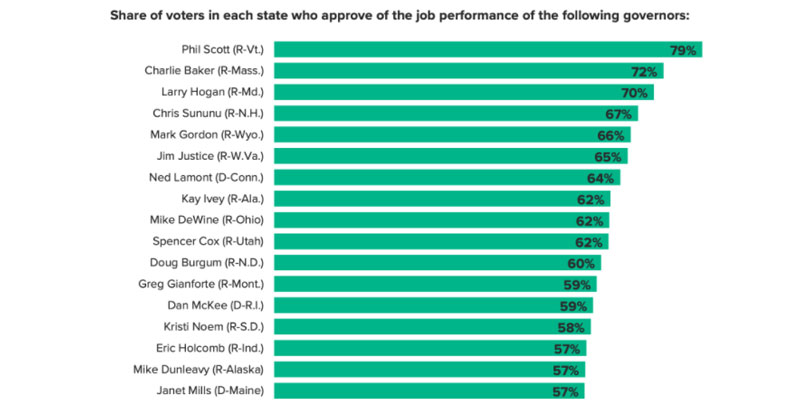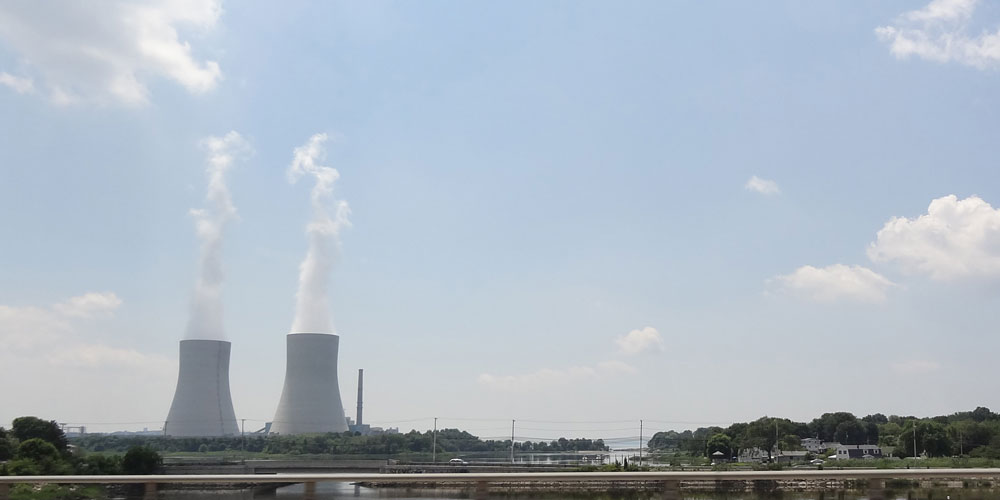I’ve found it very strange. Simply, plainly things like “equity audits” in our public schools are exercises of critical race theory (CRT). It’s just a straightforward observation, as far as I can see.
Nonetheless, people will object, even people I thought were relatively conservative and relatively clear of thought. They’ll insist they are not the same, although they won’t explain where one ends and the other begins.
As far as I can tell, their attitude is essentially the same as claiming that a school that’s teaching children to differentiate shapes is not teaching geometry and, further, that teaching geometry is not teaching math. Mike LaChance points to a Christopher Rufo tweet of a video in which a CRT expert gives the game away. CRT is the “container” for all the anti-racist stuff:
[Open full post]LEAKED: CRT cofounder Kimberlé Crenshaw tells NEA president Becky Pringle that “critical race theory traditionally is a law school class,” but is “now the huge container for anti-racist work [and] anti-racist education” in K-12 schools—vindicating my reporting over the past year. pic.twitter.com/iessDqPY5v
— Christopher F. Rufo
(@realchrisrufo) November 23, 2021
Right from the beginning, an op-ed in the Boston Globe by RI Political Co-Op progressive candidate Lenny Cioe gives off warning signals:
In many neighborhoods near colleges like Providence College, Johnson and Wales, and Brown University, predatory real estate companies are jacking up rents and forcing out families in favor of high-paying students.
And that’s just the tip of the iceberg. Significantly higher rents are threatening families in communities throughout Rhode Island.
Calling real estate companies “predatory” shouldn’t hide the underlying question that Cioe refuses to ask: Why are the landlords able to do this?
The basic economic concept is simple. In a given time and place, there is a price that somebody will pay for a product and there is a cost for which somebody can provide it. If the provider is satisfied with the profit between those numbers he or she will continue offering it. If the amount that people are willing to pay goes up and the profit grows, people who are doing other things to make money will shift to providing more of that product.
This makes the underlying problem in Providence crystal clear. More people want to live there than the city has adequate housing to satisfy. Therefore, the price that somebody is willing to pay goes up. Playing the class war card, as Cioe does, and pitting different groups of somebodies against each other is a distraction.
Either the city has to produce more housing, or it has to make fewer people want to live within its borders. But progressives don’t want more buildings to despoil the planet, and they don’t want people to move out of the cities for the same reason (and because they think people condensed into cities will be easier to control).
Refusing to pursue either of these solutions increases the value of land in the city, which means progressives must find some way to force other people to pay the difference, or they must bully landowners into pretending their property is less valuable than it is. Both of these solutions foster resentment and corruption, and nature (including human nature) will find a way.
Progressives can live in their fantasy world, where they are either insulated from reality or enjoy the cycle of feeding their delusions with the resentment that the fantasy generates. That’s no excuse for the rest of us; we have to make real, grown-up decisions.
Do we want to increase companies’ ability to build new housing within and around the city? Or do we want to make it easier for people to live and work nearby? Or do we want to find ways to make fewer people want to live in Providence and Rhode Island?
The worst thing we can do is continue sending the signal to people who consider investing in the city and state that the government might, any year now, define them as predators in the law as an excuse to steal the real value of their real estate.
Featured image by Justin Katz.
[Open full post]Five days is a long time in the social media world, but this comment on the Rittenhouse verdict from progressive Democrat state senator for Providence Tiara Mack is worth memorializing:
THERE IS NO REST. We must all learn how white supremacy impacts everyone, including white people. We know our systems are broken and we must hold everyone accountable to change.
The vilification of “whiteness” is simply a negative god to the woke. It’s an article of pure faith, and every circumstance must be made to conform with it.
[Open full post]Stephen Green refers to this policy change as “the Pedophile Protection Act”:
Joe Biden’s Department of Education is seeking to roll back a Trump-era effort to collect data on teacher-on-student sex crimes.
“The department’s Office for Civil Rights will not ask school districts questions regarding teacher-on-student sexual assault allegations as part of its 2021-2022 Civil Rights Data Collection, proposed Thursday,” reports the Washington Free Beacon. According to an Education Department spokesman, the change is designed to “reduce burden and duplication of data,” but not everyone is buying that explanation.
For a variety of reasons, this morning, I’ve been thinking about how support for Democrats has mainly to do with (1) purchased votes and (2) a false, long-cultivated image of the party. This policy is a good illustration of both.
It is in the teacher unions’ interest to focus on the members who are most in need of protection (i.e., most deserving of lower salaries and losing their jobs), and it is in the interest of the Democrats to maintain that cash cow, activist base, and voting bloc. Meanwhile, children don’t vote, and parents aren’t single-issue voters, even to the extent the media tells them what’s going on.
[Open full post]During our weekly conversation on Monday, John DePetro and I had some mild disagreement about how one might explain the most recent results of Morning Consult’s regular ranking of U.S. governors’ popularity.
The headline for Rhode Island is that Governor Dan McKee is the second-most-popular Democrat governor in the country (at thirteenth overall), behind Connecticut’s Dan Lamont (at seventh overall). This represents quite a reversal from the same poll in 2019, when RI’s Gina Raimondo was the third-least-popular governor in the country, with Ned Lamont almost as low, at fourth-least-popular.
During our radio segment, I observed that New Englanders seem relatively easy to please when it comes to their governors in this poll. Even at thirteenth in the country, McKee is still the second-least-popular governor in our region, besting only Maine Democrat Janet Mills… and she’s seventeenth-most-popular. That is, the governors of all six New England state are comfortably near the top of the list, as follows:
- Republican Phil Scott of Vermont, most popular
- Republican Charlie Baker of Massachusetts, second most popular
- Republican Chris Sununu of New Hampshire, fourth most popular
- Democrat Ned Lamont of Connecticut, seventh most popular
- Democrat Dan McKee of Rhode Island, thirteenth most popular
- Democrat Janet Mills of Maine, seventeenth most popular
John raised the excellent point that Morning Consult’s polls are ongoing and cover large spans, with these scores reflecting voter opinions all the way back to July 21 and up to October 20. During the summer, there was a bit more jubilation about coming out of the COVID lockdowns, and Joe Biden hadn’t yet cratered with his mishandling of Afghanistan, inflation, and so on.
Maybe we’re both right, to some extent.
Looking back to 2019, New England’s Republican governors were still in the top five: Baker was third; Scott was fourth; and Sununu was fifth. This was in stark contrast with the Democrats, who were all in the bottom seven: Raimondo was third worst; Lamont was fourth worst; and Mills was seventh worst.
Indications have been over the past couple years that people in the Northeast have, unfortunately, wanted the heavy hand of government during the pandemic. (Optimistically, we might say that they were sold on it, but that’s not much better.) Democrats may also have been riding the sugar high of defeating President Trump still in early summer.
The question going forward, as Biden tanks, COVID recedes, and New Englanders can go back to assessing their governors based on the job they’re actually doing running their states, is whether our Democrats return to their place at the bottom of the list. If they want to avoid that fate right before an election, perhaps they should ask themselves why their Republican peers do so well.
[Open full post]Gregory Booth, who works with the advocacy section of Rhode Island’s Public Utilities Commission (PUC) makes a reasonable point when he suggests that it might not be in our state’s best interest to have National Grid sell its Ocean State electrical distribution business to another company that lacks its cross-state infrastructure, but that isn’t why Attorney General Peter Neronha opposes the deal:
The Rhode Island Attorney General’s Office says state regulators should block the sale of the state’s largest electric distribution utility until the buyer assures that it can comply with the state’s ambitious new climate law. …
In written testimony for the attorney general’s office, consultants Mark Ewen and Robert Knecht, principals at Industrial Economics, noted that the state’s Act on Climate, enacted into law earlier this year, sets one of the most aggressive goals for greenhouse gas reductions in the nation. And while PPL Corp. “appears to agree that it will need to undertake extraordinary efforts” to meet those goals, it has offered “little in the way of proposals” for doing so, they said.
The environmental activists who push the legislation don’t seem to care what the effects on human beings who live in and around Rhode Island will be, and politicians just want the activist support and campaign messaging that they’re “doing something” about climate change. The broader swath of our population probably doesn’t think the policies through, seeing goals and greenhouse gas reduction targets as nice, but soft, statements of ambition, and that officials would never actually let them hurt actual people.
Take this story as a reminder, however, that these laws are starting to have real teeth, and the well-being of Rhode Islanders is not, even in principle, their primary purpose. It can’t be, because Rhode Island’s effect on the global climate is negligible. These laws are passed to please ideologues for votes and money and, even at their purest, to signal virtue.
Featured image by Justin Katz.
[Open full post]During the flu season of 2018, newspapers published a number of heartbreaking articles profiling people who’d died from it. That was a pretty bad flu season, but still, almost everybody recovered from the flu. As those articles rolled out, though, it changed how the illness felt. The stories provided a context of unease.
We’ve seen that many times escalated during the COVID pandemic, but this Epoch Times article about airline workers who’ve had terrible reactions to the vaccine is a reminder of what we aren’t seeing from the mainstream: the sorts of stories they’d publish if they weren’t promoting the government’s preferred solution:
[Open full post]“I sat down in the chair at the minute clinic, rolled up my sleeve, prayed, asked God to forgive me, and cried,” Williams told The Epoch Times. “The minute they stuck that needle in my arm, pain went up through my neck and I have not been the same since.” …
The day that she received the vaccine, Williams began having severe headaches and muscle spasms that would wake her from sleep. She said she went to bed and stayed there for four days in an “almost coma-like state.”
Reacting to Joe Biden’s comments on the Waukesha Christmas parade massacre, Brown University political science professor Wendy Schiller linked the incident to domestic violence:
Here’s an idea. Take domestic violence more seriously at every level of government. Biden should know as he authored the original Violence Against Women Act.
Although the mainstream narrative doesn’t make much room for this and tends to brush contrary evidence aside, taking domestic violence more seriously requires reversing the practice of treating it as something that only affects women. File this reality in the Through the Looking Glass folder of items everybody thinks they know that is wrong.
According to the most recent “National Intimate Partner and Sexual Violence Survey” from the CDC, published in 2015, domestic violence has been equalizing between the sexes. Tables 9 and 11 show the reported incidents from women and men, respectively, and they show that 3,455,000 women reported physical violence in the past year, which was actually less than the 4,255,000 men. Other measures (like contact sexual violence) go the other way. Taking stalking out of it, the combined sexual and physical violence numbers are women 6,387,000 and men 6,088,000, but each victim could report both, so the numbers of victims making reports is probably closer to even.
This shouldn’t be unexpected. In the ’00s, we started to hear reports that women were more likely to be perpetrators of abuse. A national study of adults between 18 and 28 conducted in 2007 found:
In nonreciprocally violent relationships, women were the perpetrators in more than 70% of the cases. Reciprocity was associated with more frequent violence among women (adjusted odds ratio [AOR]=2.3; 95% confidence interval [CI]=1.9, 2.8), but not men (AOR=1.26; 95% CI=0.9, 1.7). Regarding injury, men were more likely to inflict injury than were women (AOR=1.3; 95% CI=1.1, 1.5), and reciprocal intimate partner violence was associated with greater injury than was nonreciprocal intimate partner violence regardless of the gender of the perpetrator (AOR=4.4; 95% CI=3.6, 5.5).
That is, when only one partner is abusing the other, its usually the woman doing it. The study found that when the violence was mutual, men and women were equally likely to have started it. Men were more likely to inflict injury, but the study doesn’t tell us whether that’s because they’re more serious in the assault or just stronger.
This study isn’t all. In 2006, a study across two college campuses (the University of Florida and the University of South Carolina) suggested that women were more likely to report having been the perpetrator of abuse and stalking. Other studies around the same time found that mothers were more likely to abuse their children.
Whether the culture shifted back toward stereotypes after these studies or such studies stopped being conducted or broadly reported in the years since, we can’t say. But with this issue, as with so many others, if we really want to improve people’s lives, we have to stop setting policies according to erroneous progressive assumptions.
[Open full post]So, ho hum, 32 American students were chosen to study at the University of Oxford via Rhodes Scholarships, and surprise, surprise, the AP report amplifies the progressive stories within the story. But at what point do the headlines stop promoting the disproportionate distribution of prestigious awards to females?
The class of U.S. Rhodes scholars for 2022 includes the largest number of women ever selected for the scholarship in one year, the Rhodes Trust announced Sunday.
Of the 32 students chosen to study at the University of Oxford in England, 22 are women, the office of the American secretary of the trust said in a statement.
Nationally, females are already disproportionately enrolled in college (about 54%), and this result shows they’re even more disproportionately recognized by the Rhodes Scholarship organization (69%).
If that’s how a merit-driven process shook out, whatever, but at some point shouldn’t the narrative change from proclaiming girl power to wondering what’s going on with boys?
[Open full post]






